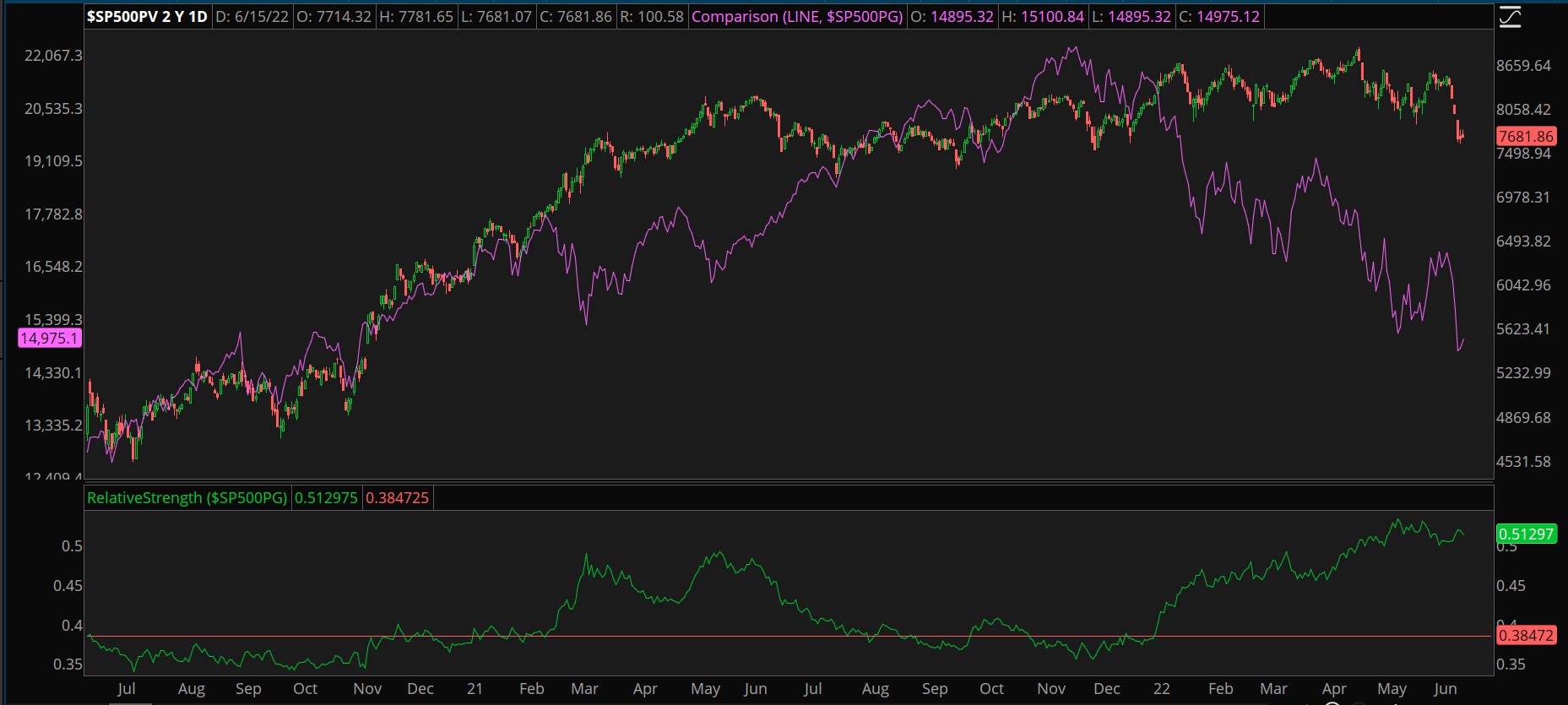(Wednesday Market Close) The Federal Reserve met the consensus Wednesday with a 75-basis-point rate hike that will lift the federal funds rate to a range from 1.5% to 1.75%. Fed Chairman Jerome Powell told reporters afterward that the 75-basis-point hike isn’t expected to be a common increase and that the Fed will likely hike by 50-75 basis points in July and then return to increases in the 25-50 basis point range thereafter.
Mr. Powell cautioned that all future moves will be “data-dependent,” and the Fed’s dot plot graph revealed that each Fed member sees the central bank’s overnight rate will reaching 3% by the end of the year with the average projection at 3.4%.
Notably, the Fed chose not to change its plans to unload its balance sheet. In fact, during the day, the Fed began its $9 trillion balance sheet reduction by allowing $15 billion worth of Treasuries to mature off the balance sheet without replacement. Throughout the remainder of June, the Fed plans to unload a total of $30 billion in Treasuries and $17.5 billion in mortgage-backed securities. The amount of quantitative tightening (QT) will ramp up over the next three months to a pace of eventually $60 billion per month in Treasuries and $35 billion in mortgage-backed securities.
The concern with QT is that it’ll add more volatility to an already volatile Treasury market. The Treasury market and the mortgage market are losing one of their biggest customers and will now have to rely on other institutions and investors to pick up the slack. Those replacing the Fed’s business may demand a higher rate of return which could push yields even higher.
Powell pointed not only to last week’s higher-than-expected Consumer Price Index (CPI) numbers as a driver for the hike, but the University of Michigan Consumer Sentiment Index data found that consumers expect inflation to rise from 3% to 3.3% in the next five years. Calling that information “eye catching,” Powell said that the possibility of inflation becoming fixed and going higher was particularly concerning for Fed officials who will continue to monitor all inflation data.
Additionally, Powell said the Fed is clarified that inflation is “headline” inflation and not core inflation. This means that as you watch analysts trying to make adjustments to paint a rosier or darker picture of what the Fed is thinking, those models should probably be given less weight.
On the supply side of the inflation equation, the Fed sees a lack of improvement due to the ongoing Russia-Ukraine war and China’s resurgence of COVID-19 lockdowns that are worsening supply chain problems.
The Fed also adjusted its unemployment outlook higher as Powell noted that executing an economic “soft landing” has become increasingly more difficult. The Fed lowered their 2022 gross domestic product (GDP) to 1.7% down from 2.8%. Powell added that the central bank hopes that unemployment won’t move above 4.1% as rates do their work slowing the economy.
Stocks rose during the morning and with most of the surprises already accounted for, they remained relatively unchanged after the announcement. After the press conference, stocks tried to stage another rally but were turned back. Nonetheless, the S&P 500 (SPX) finished the day 1.46%, while the Nasdaq Composite ($COMP) climbed 2.5% and closed higher for the second day in a row. The Dow Jones Industrial Average ($DJI) rose 1%. The 10-year Treasury yield (TNX) was also little changed after falling this morning from Tuesday’s spike—and finished at 3.395%.

Growth Vs. Value
As yields have been rising in anticipation and reaction to the Fed’s rate hikes, investors have turned to value stocks to grow or maintain their portfolios. The S&P 500 Pure Value Index shows that investors who bought value stocks have likely maintained portfolio value as the index has oscillated in a sideways trend since May of 2021. In contrast, the S&P 500 Pure Growth Index has downtrended since November. Now that the Fed is feeling pressure to be more aggressive, will that trend continue?
The value index is still demonstrating relative strength compared to the growth index, which suggests that value is likely to outperform growth. However, this doesn’t mean that value stocks won’t fall as interest rates rise. We saw this starting last week when the value index dropped nearly 10% in four days.
As interest rates rise, fundamentally driven investors will use their valuation model to determine the intrinsic price of a stock. Value stocks tend to be less affected by these new valuations the models spit out, but they are still discounted which lowers their intrinsic value which may result in lower stock prices.
Another benefit that many value stocks bring is that they often pay dividends—many of which pay above the average growth stock and even the S&P 500 (SPX). However, the Dow Jones U.S. Select Dividend Index has fallen more than 10% in the last week.
TD Ameritrade® commentary for educational purposes only. Member SIPC.
Image sourced from Unsplash
This post contains sponsored advertising content. This content is for informational purposes only and not intended to be investing advice.
© 2025 Benzinga.com. Benzinga does not provide investment advice. All rights reserved.
Trade confidently with insights and alerts from analyst ratings, free reports and breaking news that affects the stocks you care about.